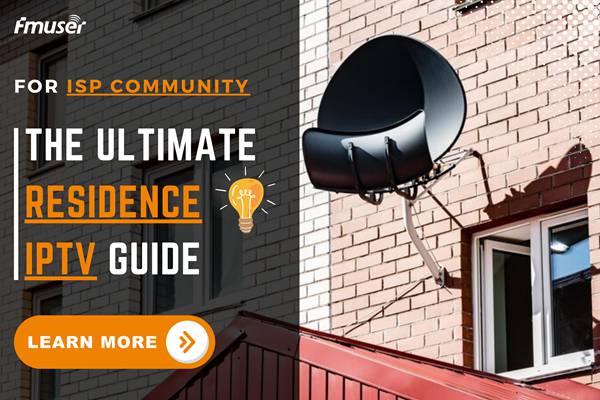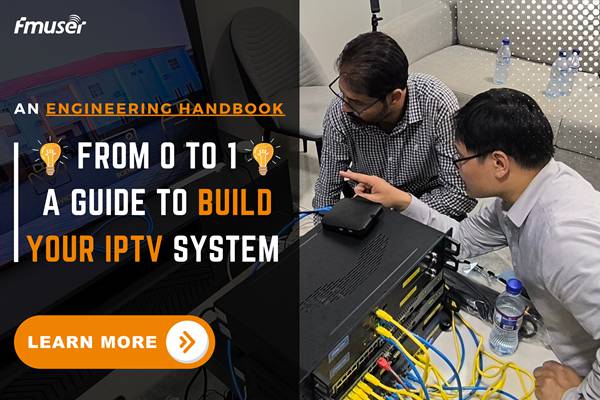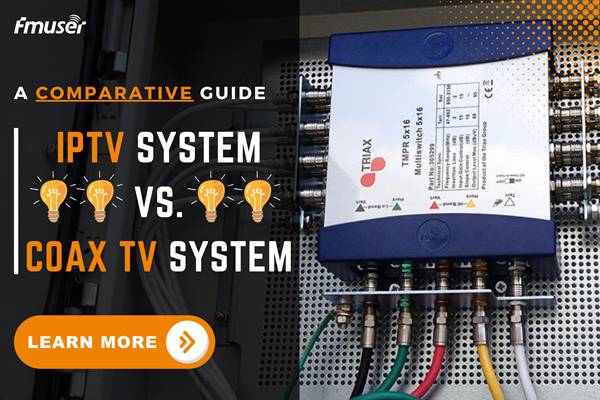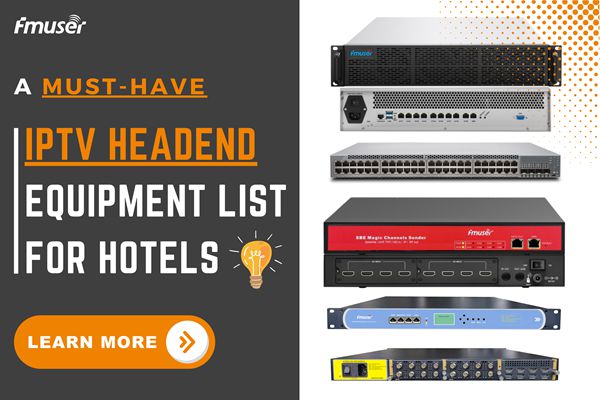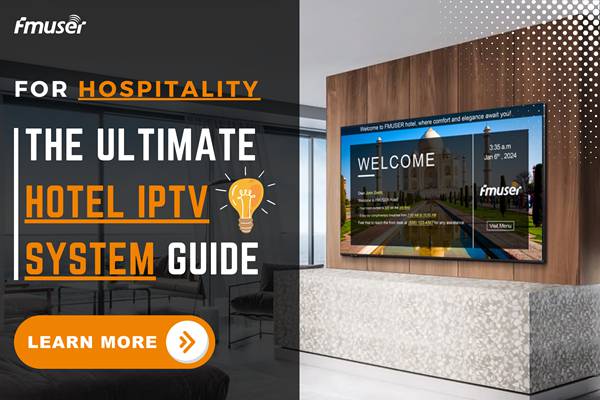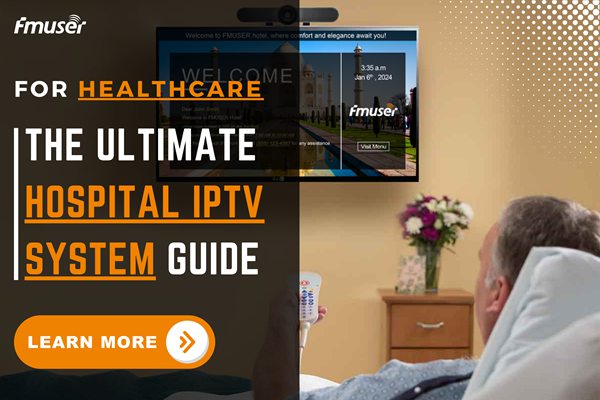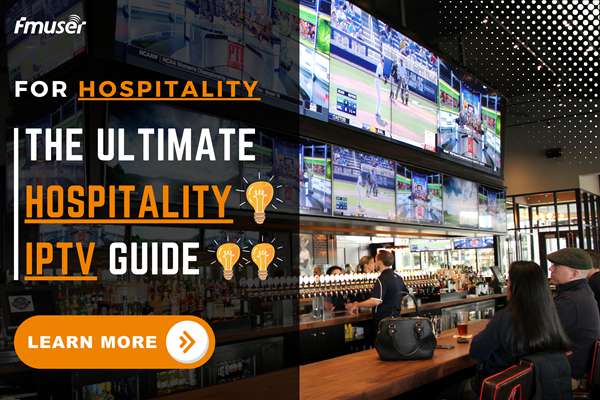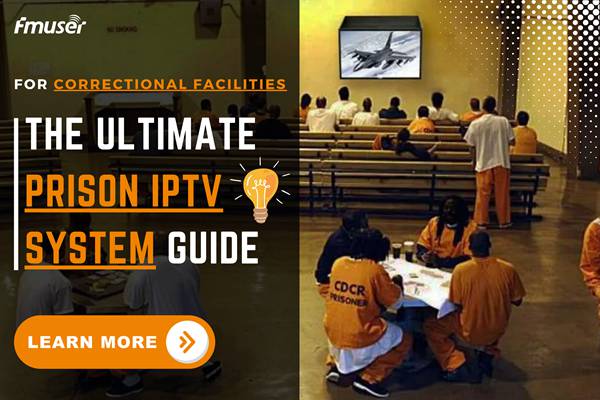
Hot tag
Popular search
Home IPTV System: A Quick Setup Guide at Low Cost
In the rapidly evolving landscape of home entertainment, the traditional cable TV systems and analog broadcasts are slowly becoming relics of the past. As more homeowners seek flexibility and customization in their viewing experiences, the shift towards Internet Protocol Television (IPTV) is not just inevitable; it is already underway.
Many existing commercial IPTV solutions cater primarily to larger businesses and institutions, offering features and pricing structures that are often overkill for residential clients. This leaves homeowners underserved, with limited options that either require expensive subscriptions or cumbersome setups. The market is clearly ripe for a tailored approach that can meet the specific needs of families and individuals wishing to embrace this new era of digital entertainment.
For system integrators, home IPTV presents a high-demand, low-effort revenue stream. By offering customizable, affordable solutions, integrators can tap into a growing market that values both quality and accessibility. Homeowners are looking for systems that either allow them to subscribe to popular services like DStv or Canal+, with monthly fees and extensive channel lineups, or opt for a more localized solution that utilizes a LAN-based IPTV system.
The latter option, deployed through Ethernet cables, offers a one-time payment model without the burden of ongoing subscriptions. This allows for significant cost savings in the long run. Plus, these systems can be customized to fit individual preferences, such as specific content selections and user interfaces, making them appealing to a wide range of clients.
In this guide, you will learn how to build and sell these affordable, tailored IPTV systems in few minutes.
Keep reading for more!
Rising Demand for Residential IPTV
According to industry reports, the global IPTV market is projected to grow significantly, reflecting a shift in consumer preferences towards digital content delivery. More homeowners are opting for streaming services over traditional cable subscriptions, and this trend shows no signs of slowing down.
Homeowners are increasingly drawn to IPTV for several compelling reasons:
- Centralized Media Access: IPTV allows users to access a wide variety of channels and content from a single platform. This eliminates the need for multiple subscriptions and remote controls, simplifying the home entertainment experience.
- No Cable Clutter: With the transition to IPTV, homeowners can say goodbye to tangled cables and bulky set-top boxes. The streamlined setup not only looks cleaner but also enhances the overall aesthetic of modern homes.
- Customization: Unlike traditional cable packages that force customers into one-size-fits-all solutions, IPTV systems can be tailored to meet individual preferences. Homeowners can choose specific channels, genres, and even additional features that suit their lifestyle.
As streaming continues to dominate the media landscape, the demand for residential IPTV solutions is set to rise further. This presents a notable opportunity for integrators who understand the needs of today's tech-savvy consumers.
Why Traditional Commercial Solutions Fail Here
Despite the growing interest in IPTV, many commercial solutions fail to adequately address the needs of residential clients. Here are the primary reasons why traditional systems fall short:
- Cost Barriers: Commercial IPTV solutions often come with high hardware and software costs that are not justifiable for the average homeowner. These systems typically offer advanced features and capabilities that are unnecessary for residential use, leading to a perception that IPTV is too expensive.
- Complexity vs. Homeowner Needs: While commercial solutions are designed to cater to enterprise-level clients, residential users prioritize simplicity. Homeowners want easy-to-use systems that provide straightforward access to content without intricate configurations or technical expertise. The complexity associated with traditional commercial solutions can be overwhelming and off-putting for many users.
In contrast, a low-cost, user-friendly IPTV solution specifically designed for residential clients can bridge the gap in the market. By focusing on affordability and simplicity, system integrators can create offerings that truly resonate with homeowners, positioning themselves as leaders in the emerging IPTV landscape.
Cable TV System vs. FMUSER IPTV System: Transforming Home Entertainment

The shift from traditional cable TV to FMUSER IPTV systems is revolutionizing the way homeowners access and enjoy entertainment. This transition not only enhances the viewing experience but also significantly impacts business opportunities in the hospitality and home rental markets. By embracing IPTV solutions, homeowners can enjoy greater flexibility, customization, and cost savings, while businesses can differentiate themselves in a competitive landscape.
Key Benefits of Transitioning to IPTV
- Freedom of Choice: Unlike cable TV, IPTV allows homeowners to customize their channel lineup and access on-demand content that suits their preferences.
- Cost Efficiency: IPTV systems typically offer lower monthly costs compared to expensive cable subscriptions, making it a more budget-friendly option for homeowners.
- Scalability: IPTV can easily scale with the homeowner’s needs, accommodating additional rooms or devices without significant extra costs.
- Enhanced Features: Advanced functionalities such as DVR capabilities, multi-device streaming, and user-friendly interfaces provide a superior viewing experience.
- Local Content Integration: IPTV allows for the addition of local channels and content, enhancing the relevance of entertainment options.
- Improved User Experience: With streamlined interfaces and intuitive navigation, IPTV systems make it easier for users of all ages to access their favorite shows and movies.
Comparison Table: Cable TV System vs. FMUSER IPTV System
| Feature | Cable TV System | Hotel IPTV Solution |
|---|---|---|
| Images | cable-tv-system-complicated-management.webp | fmuser-hotel-iptv-system-easy-cable-management.webp |
| Interactivity | Limited; only channel switching | Enhanced; includes VOD, hotel info, dining/shopping, music channels, scrolling text, etc. |
| Cabling Costs | High; coaxial cable required | Lower; can share CAT6 network cables with other systems |
| Multi-Service Operation | Restricted; limited bandwidth for HD or multiple streams | Supports; simultaneous viewing of multiple HD channels & other interactive functions |
| Encryption & Access Control | Limited; via CA cards | Advanced; multi-layered user management via web interface, better content protection |
| Image Quality | Standard; mainly SD | High; including HD and UHD options |
| Sound Quality | Basic; can enhance with external audio equipment | Superior; Dolby & surround sound support |
| Signal Stability | Vulnerable; prone to interference & snow/pixelation | Stable; reliable signal |
| Portability | Non-existent; fixed installation area | Versatile; accessible on multiple devices for mobile viewing |
| Bandwidth Requirements | Low; SD requires few Mbps | Higher; especially for HD & rich content |
| Flexibility | Low; fixed channel lineup | High; customizable programs & personalized recommendations |
| Technological Development | Mature; widespread adoption | Evolving; continuous upgrades for enhanced content & features |
| User Experience | Basic; limited functionality | Enhanced; multiple interactive features & personalized experience |
Transitioning from a traditional cable TV system to an FMUSER IPTV system offers homeowners and businesses the opportunity to enhance their entertainment experience while improving cost efficiency and flexibility. By making this switch, they can create a more enjoyable and tailored living environment, positioning themselves for success in a competitive market.
Essential Components of a Low-Cost Home IPTV System
A successful low-cost home IPTV system requires the right set of components to ensure seamless operation and flexibility. Below are the essential elements that contribute to an effective IPTV setup:
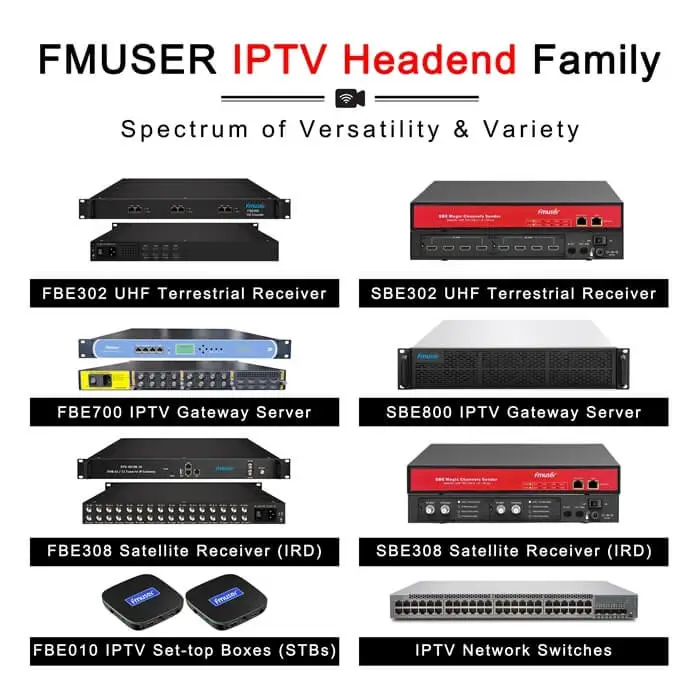
1. FMUSER FBE700 IPTV Gateway Server
At the heart of the IPTV system is the FMUSER FBE700 IPTV gateway server. This server serves as the main component, offering customizable input module options to accommodate various requirements.
The FBE700 supports:
- HDMI Module: For connecting HDMI-compatible devices.
- Satellite Free-to-Air (FTA) Module: Enables reception of free satellite programs.
- Satellite Conditional Access Module (CAM): Allows for the integration of paid satellite programs.
- UHF Module: Supports terrestrial wave programs for local broadcasting.
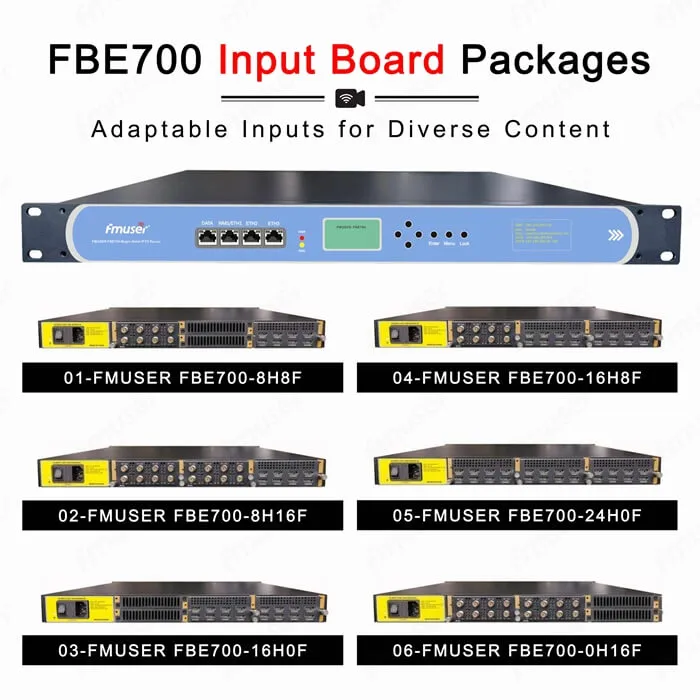
Designed to provide lower-cost alternatives with comparable or superior performance, the FBE700 is ideal for small hotels, community centers, residential houses, lodges, villas, and similar settings.
2. FMUSER HDMI Set-Top Boxes

HDMI set-top boxes are crucial for linking televisions to the IPTV system. These devices allow users to access a wide array of streaming services and content. Opt for models that offer support for various resolutions, including HD and 4K, to enhance the viewing experience.
3. Content Sources
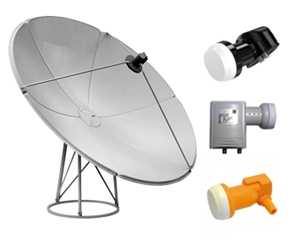
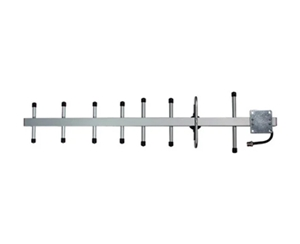
A versatile IPTV system must include a range of content sources to meet diverse viewer preferences. The primary content sources include:
- DStv or Canal+ Boxes: These paid channels connect to the FBE700 via coax cables from a satellite dish, using HDMI output to provide a broad selection of entertainment options.
- Local HDMI Content: Incorporate local HDMI sources, such as flash drives or DVD players, that connect through HDMI input. This enables users to enjoy their personal media collections.
- Free-to-Air (FTA) and Paid Satellite Programs: Satellite dishes can be integrated to provide free-to-air content directly to the FBE700 via coaxial cable. For paid programming, a Conditional Access Module (CAM) can be utilized to decrypt content, granting access to premium viewing options.
4. Cables and Accessories

Reliable cabling and accessories are essential for the optimal performance of the IPTV system. Key components include:
- Ethernet CAT6 Cables: Vital for connecting devices to the network, ensuring high-speed data transfer and stable streaming capabilities.
- Coaxial Cables: Necessary for connecting satellite dishes and content sources to the FBE700. Be sure to select the appropriate type based on installation requirements (indoor or outdoor).
- Accessories: Accessories generally include F-type connectors and various connectors needed for effective cable management and connectivity. These elements ensure a clean and organized installation that enhances system reliability.
Step-by-Step Build Guide (Under 4 Hours)
Creating a home IPTV system can be a straightforward process, especially when following this step-by-step guide. In less than four hours, you can set up a fully functional IPTV solution tailored to your client’s needs.
1. Environmental Assessment
Assess the installation environment to identify any potential challenges. This includes evaluating existing infrastructure, such as whether there are copper wires already in place. If copper wiring exists, transitioning to a fully IP-based system might incur high costs for removal or modification. In such cases, a copper-based IPTV solution could be a more cost-effective alternative. Conversely, if the entire system is to be built from scratch, additional equipment will need to be acquired, and installation may be more complex, impacting overall costs. Conducting an on-site assessment will help identify specific requirements and obstacles that could affect the installation process.
2. Client Needs Checklist
Before diving into the installation, it’s essential to carefully plan the setup. Here’s a checklist to ensure you cover all necessary aspects:
- Number of Rooms: Determine how many rooms will require IPTV access. This will help in deciding the number of devices needed.
- Content Preferences: Discuss with your client which channels or streaming services they want to include. This will guide the content source selection.
- Minimum Bandwidth: If the client want to access to online services such as YouTube or Netflix via TV sets, ensure that the home’s internet connection meets the minimum bandwidth requirements for smooth streaming. A minimum of 25 Mbps is generally recommended for HD content.
3. Installation & Configuration
Now that you’ve planned, it’s time to move on to the installation and configuration of the IPTV system:
- FMUSER FBE700 Server Setup: Start by setting up the FBE700 IPTV server. This server has built-in software for easy management, including content source management for satellite, UHF, and HDMI input content, as well as user interface customization management—all in one.
- Content Source Equipment Installation: This includes the installation of satellite dishes, UHF Yagi antennas, and HDMI input devices. For satellite dish installation, it is highly recommended to engage a local satellite installer to ensure precise setup. A correct installation is crucial, as it can significantly affect program quality and stability. Additionally, a program input frequency list is often necessary, so it's advisable to hand over this task to someone with expertise in satellite installations to avoid potential issues.
- Device Pairing: Pair devices with coax and Ethernet CAT6 cables, respectively, based on different equipment mentioned. For example, for satellite dishes, use a coax cable to connect directly to the FBE700 IPTV server for free-to-air TV programs. If using paid services like DStv boxes or Canal+, connect the coax to the box and use an HDMI cable for input to the FBE700 IPTV server. Additionally, use a CAT6 cable to connect your laptop to the FBE700 IPTV server for easy configuration. Wire up the set-top box with TV sets via HDMI cable and ensure other wiring is completed as well.
- Channel Mapping: Configure the built-in IPTV software of the FBE700 server for UHF, HDMI, and satellite programs to easily map out the desired channels based on the client’s content preferences. This step may involve adding channels manually or importing a predefined list.
Time-Saving Hacks:
FMUSER provides pre-configuration for all devices, especially the FBE700 IPTV Gateway Server, which is the most complex equipment in the home IPTV system package. This pre-configuration saves valuable time for ISPs when on-site, as all equipment is plug-and-play and ready to go. With FMUSER’s solution, you can streamline the installation process, allowing you to focus on the finer touches while saving both time and costs. Ready to simplify your IPTV setup? Contact us today to learn more about our pre-configured solutions and how FMUSER can help you enhance your installation efficiency!
4. Testing & User Training
Once the installation is complete, thorough testing and user training are essential to ensure a seamless experience:
| QA Checklist |
|
| Simple User Guides |
|
Having these resources available not only empowers homeowners to use their new IPTV system effectively but also enhances customer satisfaction, making them more likely to recommend your services to others.
Customization for Competitive Differentiation
In a competitive market, offering customized IPTV solutions can set you apart from other providers. By branding the experience and using strategic pricing models, you can enhance client satisfaction and build loyalty.
1. Branding the Experience
One effective way to differentiate your IPTV services is through branding. Providing a unique user experience not only elevates your product but also fosters client loyalty. Here are some strategies to consider:
2. White-Label Apps and Branded Interfaces:
Utilize tools like IPTV Smarters to create white-label applications that can be branded specifically for your clients. This allows you to offer personalized interfaces that reflect the homeowner’s preferences, giving them a sense of ownership over their IPTV experience.
3. Add-Ons for Enhanced Value:
Consider integrating additional features such as:
- Local Weather Updates: A built-in weather feature keeps homeowners informed about local conditions without needing to switch apps.
- News Feeds: Provide personalized news feeds that can be customized based on user preferences, offering them quick access to important updates.
- Smart Home Integration: Connect IPTV systems with existing smart home devices. For example, users can control their lights or thermostats directly through the IPTV interface, making the system more versatile and appealing.
4. Tiered Pricing Models
Establishing a tiered pricing model is an effective strategy for customization, allowing you to cater to various budgets and specific requirements. Unlike traditional subscription models, this approach focuses on the number of content source inputs and added features to enhance profitability. Here’s how to implement this with example packages:
- Basic Package ($199): This entry-level option could include a limited number of content source inputs, allowing clients to access essential channels tailored to their needs while remaining budget-friendly.
- Expanded Package ($299): This mid-tier option might offer additional content source inputs, such as extra HDMI connections or satellite channels, providing clients with more flexibility and choices at a reasonable cost.
- Premium Package ($499): For clients seeking a comprehensive solution, this package could include 4K support, a broader array of channels, and advanced features like DVR capabilities, along with enhanced customization options.
5. Customization options
Customization options are also available to allow homeowners to customize their package based on specific needs. For instance, if homeowners plan to rent their property to travelers, you can offer additional features such as:
- Local Scenic Spot Introductions: A service that provides information about nearby attractions, enhancing the guest experience.
- Family Channel Add-Ons: Options for extra channels tailored for specific demographics (e.g., kids’ channels for family-oriented homes or adult channels for entertainment in different rooms).
- Etc.
6. Upsell Strategies
After establishing the basic structure, consider implementing upsell strategies:
- Maintenance Contracts: Offer annual maintenance contracts that include regular updates, troubleshooting assistance, and system checks. This not only provides added value but also generates recurring revenue.
- Annual Updates: Create packages that include annual content updates or additional channel subscriptions. This keeps the service fresh and encourages clients to invest in their IPTV systems for the long run.
Marketing Your Home IPTV Solution
Successfully marketing your home IPTV solution requires a targeted approach that resonates with the right audience. By identifying ideal customer profiles and employing effective sales strategies, you can increase your reach and enhance your business growth.
1. Targeting the Right Clients
Understanding who your ideal clients are is crucial for tailoring your marketing efforts. Here are some key profiles to consider:
- Villa Owners: High-income homeowners who expect premium entertainment options. They often seek customized solutions that provide a luxurious viewing experience and integrate seamlessly with their smart home systems.
- Airbnb Hosts: Property owners offering short-term rentals are looking for ways to enhance guest experiences. Offering an IPTV solution can be a selling point that differentiates their listings from competitors.
- Tech-Savvy Families: Households with multiple devices and a strong interest in technology. These clients value customization and flexibility, making them ideal candidates for affordable, tailored IPTV solutions.
- Additional Property Types: Beyond the primary client profiles, consider targeting owners of various types of residential structures, this may include owners of cottages, bungalows, mansions, chalets, residences, dwellings, cabins, homesteads, lodges, sanctuaries, quarters, habitats, villas, abodes, havens, and other types of homes and houses
To effectively reach these customer segments, incorporate local SEO keywords into your marketing materials. For example, using phrases like “Affordable home IPTV in [City]” will help improve your visibility in local searches, making it easier for potential clients to find your services.
2. Sales Strategies
Implementing effective sales strategies can significantly boost your client acquisition efforts. Here are some tactics to consider:
- Bundle with Internet Packages or Smart Home Installations: Offer IPTV solutions as part of a bundle with internet services or smart home installations. This not only adds value for clients but also simplifies the purchasing process by providing a comprehensive package that meets multiple needs.
- Create Demo Videos: Highlight the ease of use and functionality of your IPTV systems through engaging demo videos. These videos should showcase the setup process, key features and benefits, real-life usage scenarios, and leverage social media.
Turn Homeowners into Loyal Clients
As we’ve explored throughout this guide, home IPTV systems present a unique opportunity for both homeowners and system integrators. The transition from traditional cable and analog TV to IPTV solutions is not only a cost-effective choice but also a pathway to enhanced entertainment experiences.

From a business perspective, the profitability of home IPTV systems is compelling. With relatively low startup costs and potential for recurring revenue through support contracts, integrators can build a sustainable business model that meets the growing demand for high-quality, personalized entertainment options.
Now that you understand the immense potential of home IPTV systems, it's time to take the next step. Whether you're ready to dive into a new venture or enhance your existing offerings, we are here to support you. Download our hotel IPTV solution in PDF format to learn more details:
| Category |
Content | |
|---|---|---|
| FMUSER FBE700 All-In-One IPTV Gateway Server Introduction (EN) |
||
| FMUSER IPTV Solution for System Integrators (EN) |
||
| FMUSER Company Profile 2024 (EN) |
||
| FMUSER FBE800 IPTV System Demo - User Guide |
||
| FMUSER FBE800 IPTV Management System Explained (Multiligual) | English |
|
| Araic |
||
| Russian |
||
| French |
||
| Korean |
||
| Portuguese |
||
| Japanese |
||
| Spanish |
||
| Italian |
Download Now | |
Tags
Contents
Related Articles
CONTACT US


FMUSER INTERNATIONAL GROUP LIMITED.
We are always providing our customers with reliable products and considerate services.
If you would like to keep touch with us directly, please go to contact us

